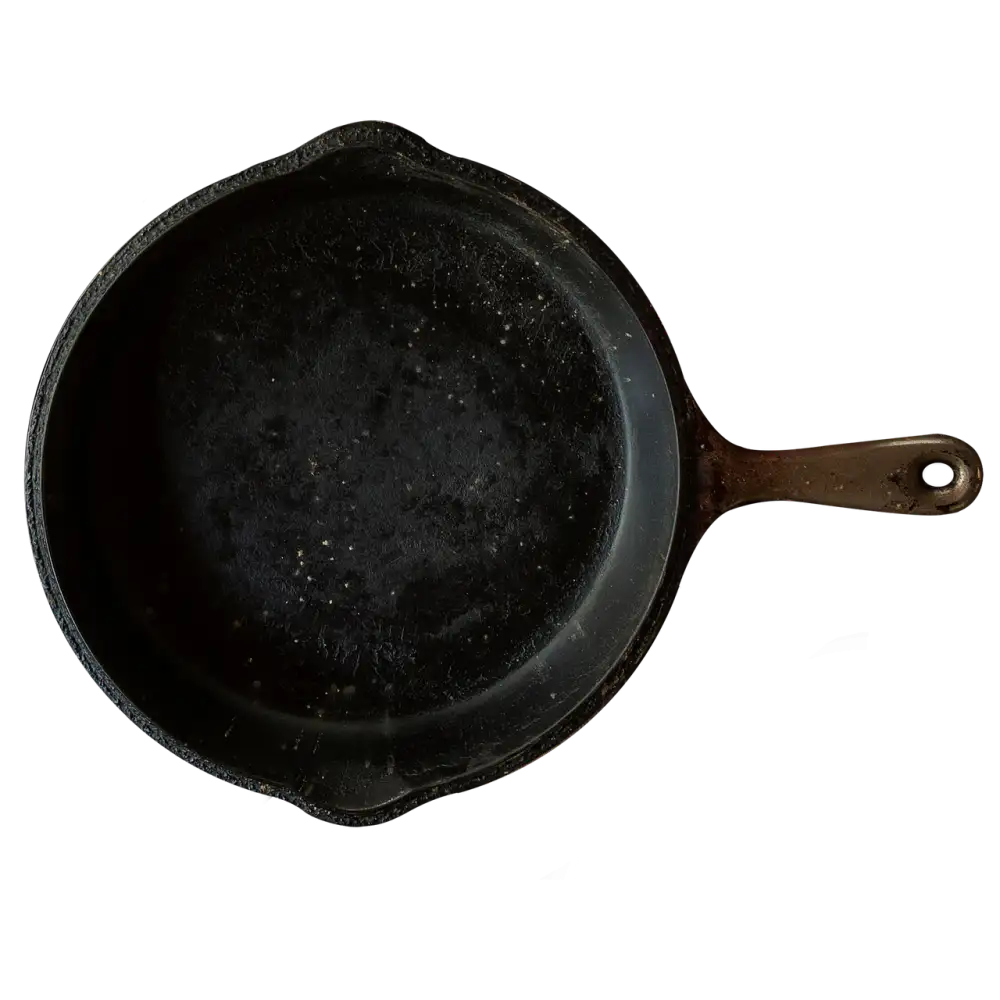Revive Your Cast Iron Skillet: Master the Art of Cleaning for a Pristine Home Cooking Experience

- Gather necessary materials for cleaning
- Step-by-step instructions for cleaning a cast iron skillet:
- Preparing the skillet for cleaning
- Removing food residue and stuck-on particles
- Scrubbing the skillet with a gentle brush or sponge
- Rinsing the skillet thoroughly with hot water
- Drying the skillet completely
- Applying a thin layer of oil to prevent rust
- Tips for maintaining a clean cast iron skillet
The cast iron skillet is a versatile and beloved tool in the kitchen, known for its ability to evenly distribute heat and create deliciously crispy dishes. However, to maintain its pristine condition and ensure optimal cooking performance, regular cleaning is essential. Cleaning your cast iron skillet not only removes food residue and prevents rust, but it also helps to preserve its seasoning, enhancing the flavors of your meals. In this article, we will guide you through the art of cleaning a cast iron skillet, so you can enjoy a pristine home cooking experience every time.
Gather necessary materials for cleaning
To effectively clean your cast iron skillet, you will need a few essential materials. First and foremost, gather a sponge or gentle brush specifically designated for cleaning cast iron. Avoid using abrasive scrubbers or steel wool as they can damage the skillet's seasoned surface. Additionally, have hot water readily available for rinsing purposes. Lastly, make sure to have a clean towel or paper towels on hand for drying the skillet thoroughly after cleaning. With these materials at your disposal, you'll be well-equipped to revive your cast iron skillet to its former glory.
Step-by-step instructions for cleaning a cast iron skillet:
Remember, never use harsh chemicals or abrasive cleaners on your cast iron skillet as they can damage its seasoning.
Preparing the skillet for cleaning
Before diving into the cleaning process, it is essential to prepare your cast iron skillet properly. Start by allowing the skillet to cool down completely after use. Once cooled, gently scrape off any food residue or stuck-on particles using a wooden spatula or scraper. Avoid using metal utensils as they can scratch the surface of the skillet. This initial step will make the cleaning process much easier and more effective.
Removing food residue and stuck-on particles
To remove food residue and stuck-on particles from your cast iron skillet, start by using a spatula or scraper to gently scrape away any large chunks of food. Next, sprinkle coarse salt onto the surface of the skillet and use a damp cloth or paper towel to scrub away any remaining debris. If necessary, you can also use a small amount of mild dish soap. Be sure to avoid using harsh abrasives or metal scouring pads, as these can damage the seasoning on your skillet. With a little patience and gentle scrubbing, you'll be able to restore your skillet to its pristine condition.
Scrubbing the skillet with a gentle brush or sponge
When it comes to scrubbing your cast iron skillet, it's important to use a gentle brush or sponge. Avoid using abrasive materials that could damage the seasoning of the skillet. Start by wetting the brush or sponge with hot water and add a small amount of mild dish soap if needed. Gently scrub the surface of the skillet, paying extra attention to any stubborn food residue or stuck-on particles. Use circular motions to lift off any remaining debris. Be patient and avoid applying too much pressure, as this could scratch the surface.
Rinsing the skillet thoroughly with hot water
After scrubbing the skillet with a gentle brush or sponge, it's time to give it a thorough rinse. Fill your sink or a basin with hot water and carefully place the skillet inside. Make sure the water covers the entire surface of the skillet. Use your hands or a clean cloth to swish the water around, ensuring that all remaining soap residue and food particles are washed away. The hot water will help to loosen any stubborn debris that may still be clinging to the skillet. Continue rinsing until the water runs clear, indicating that the skillet is free from any remaining dirt or grime.
Drying the skillet completely
Once you have rinsed the skillet thoroughly with hot water, it is crucial to dry it completely. Leaving any moisture on the surface can lead to rusting. To ensure a pristine cooking experience, use a clean cloth or paper towel to dry the skillet thoroughly. Pay extra attention to the handle and any crevices where water may accumulate. If needed, place the skillet on low heat for a few minutes to evaporate any remaining moisture. Remember, a completely dry skillet will prevent rust and maintain its longevity.
Applying a thin layer of oil to prevent rust
Applying a thin layer of oil to your cast iron skillet is essential for preventing rust and maintaining its longevity. After drying the skillet completely, use a paper towel to apply a small amount of vegetable oil or melted shortening to the entire surface, including the handle. Make sure to coat both the inside and outside of the skillet evenly. This protective layer of oil acts as a barrier against moisture, preventing rust from forming. Remember to store your skillet in a dry place to further protect it from humidity. By regularly applying oil, you can ensure that your cast iron skillet remains in pristine condition for years to come.
Tips for maintaining a clean cast iron skillet
Published: 11. 12. 2023
Category: Home



